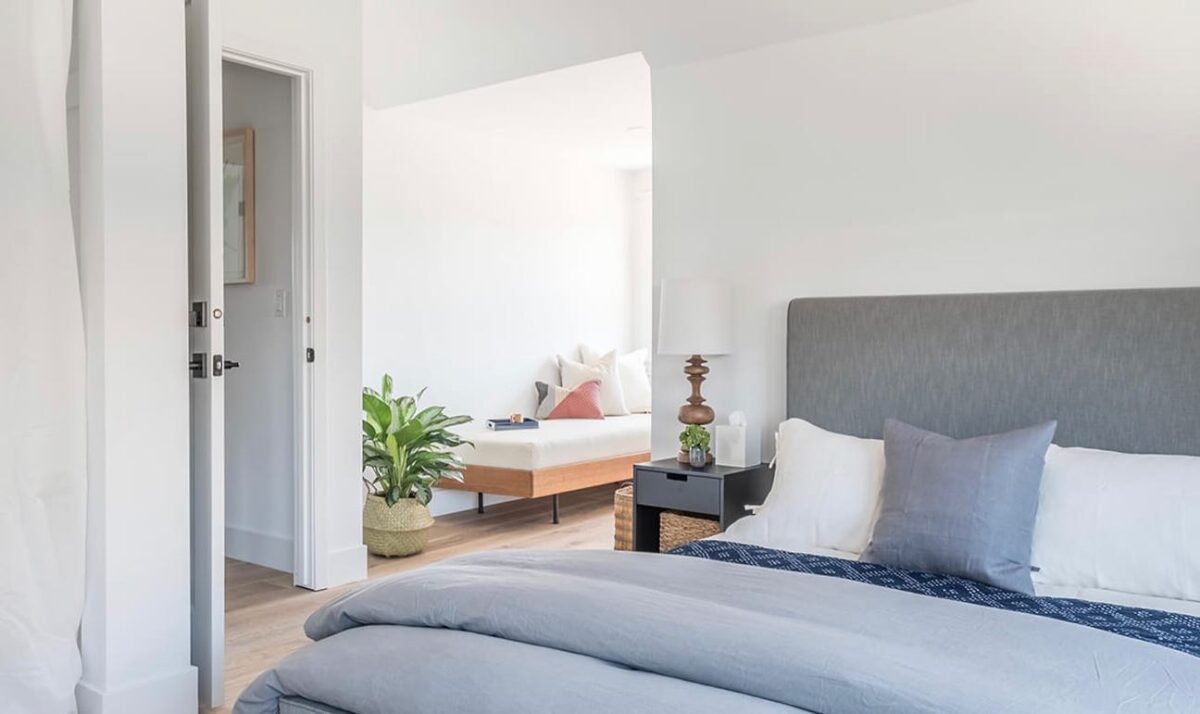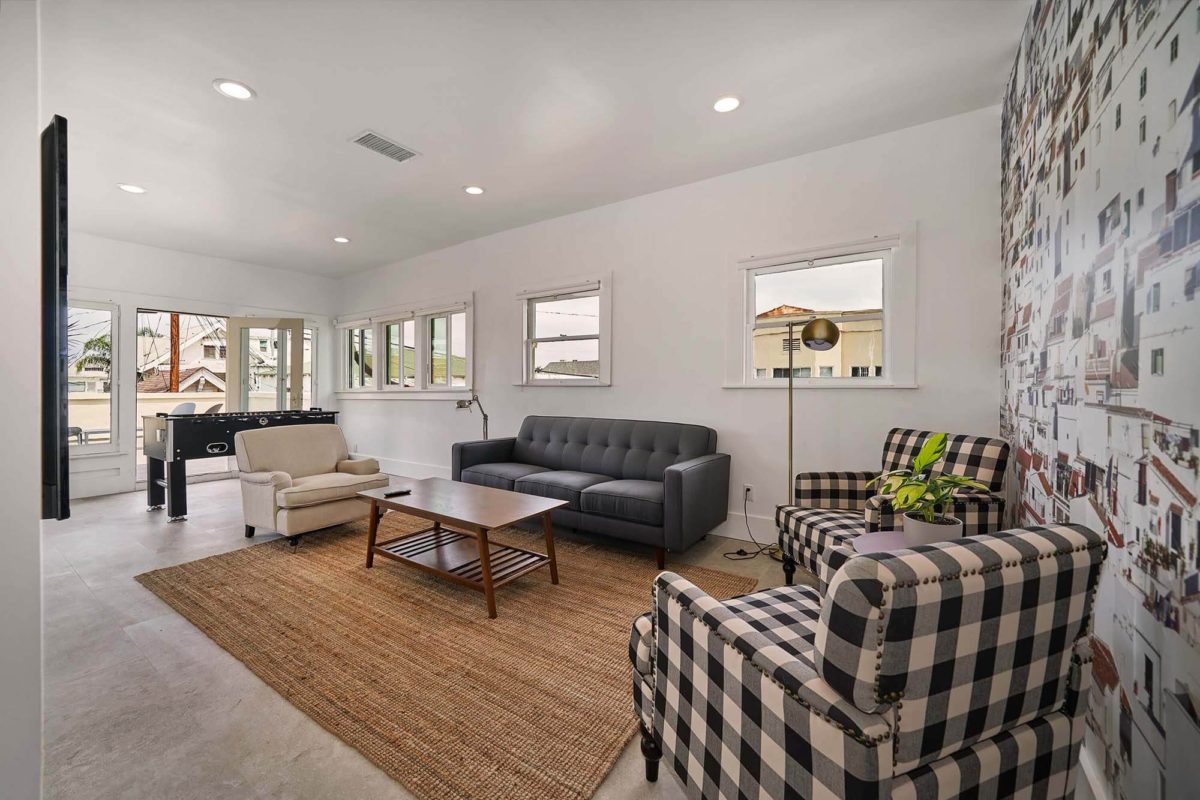In a rapidly changing urbanized world, the way we live is undergoing a seismic shift. One of the most significant transformations in our cities is the emergence of Coliving—a novel approach to housing that is gaining traction globally.
Coliving refers to a modern housing arrangement where individuals or small groups of people live together in shared spaces. It typically involves private bedrooms and bathrooms, while common areas like kitchens, living rooms, and workspaces are shared among the residents. Coliving spaces often come fully furnished and equipped with amenities like high-speed internet, cleaning services, and community events.
The popularity of Coliving can be attributed to several factors:
- Cost-effectiveness: Coliving offers an affordable housing option, especially in expensive urban areas where renting an entire apartment can be costly. By sharing the rent and expenses with other residents, individuals can enjoy a more affordable living situation in desirable neighbourhoods that might otherwise not be affordable.
- Community and socialization: Communal spaces emphasize community and social interactions. They often organize events, workshops, and networking opportunities to foster a sense of belonging and facilitate connections among residents. This can be particularly appealing for individuals who enjoy a social and collaborative living environment.
- Convenience and flexibility: Coliving spaces are typically designed to cater to the needs of modern lifestyles. They often provide amenities like fully furnished rooms, high-speed internet, cleaning services, and sometimes even access to coworking spaces. Often the need to own a car is eliminated as most cohousing spaces are in well- connected locations. This convenience and flexibility can be appealing to individuals who value a hassle-free living experience.
- Networking and professional opportunities: Coliving spaces often attract a diverse group of individuals, including entrepreneurs, freelancers, and professionals from various fields. Living in such an environment can provide opportunities for networking, collaboration, and sharing of knowledge and skills.
- Sustainability: By sharing resources and facilities, Coliving promotes a more sustainable way of living. It reduces the per-person demand for space, energy, and household goods, contributing to less waste and a smaller carbon footprint.
Whether Coliving is right for you depends on your personal preferences and circumstances. Here are some factors to consider:
- Lifestyle preferences: If you enjoy socializing, building connections, and participating in community events, Coliving can be a good fit. However, if you prefer privacy and solitude, Coliving might not align with your lifestyle.
- Budget: Coliving can be a cost-effective option, but it’s essential to assess your budget and compare the costs with alternative housing options in your area. Consider the rental prices, additional fees, and the amenities provided to determine if it aligns with your financial situation.
- Compatibility: Living with other people requires a certain level of flexibility, compromise, and respect for shared spaces. If you are comfortable with the idea of communal living and can adapt to different personalities and living styles, Coliving can be an enjoyable experience. However, if you prefer more control over your living environment, you may find it challenging to adjust to the dynamics of a Coliving space.
Coliving offers many benefits and advantages to traditional housing Ultimately, it’s important to research and visit different Coliving spaces, talk to current residents, and carefully consider your own needs and preferences before deciding if Coliving is right for you.
Understanding the Concept of Coliving
At its core, Coliving is a form of intentional living that emphasizes community and collaboration. Think of it as a modern, shared housing arrangement where individuals, often strangers, choose to live together and share common spaces, resources, and amenities. This arrangement isn’t merely about splitting rent and utilities; it’s about fostering a sense of community, facilitating social interactions, and encouraging shared experiences.
Unlike traditional roommate situations, Coliving typically involves organized activities and services an overseeing entity provides, such as cleaning, cooking, and laundry. This model promotes a lifestyle that intertwines convenience, flexibility, and community.
The residents of Coliving spaces range from digital nomads, young professionals, and students to entrepreneurs, retirees, and everyone. A shared desire for community and collaboration and a value for affordable and hassle-free living ties these diverse individuals together.
History and Evolution of Coliving
The concept of Coliving isn’t new. It originates in various cultural and historical precedents, including boarding houses, communes, and kibbutzim. However, the modern iteration of Coliving reflects contemporary social, economic, and technological trends.
The rise of Coliving in its present form can be traced back to the early 2000s, coinciding with the emergence of the ‘sharing economy.’ This period was marked by the launch of disruptive platforms like Airbnb and Uber that harnessed the power of digital technology to enable shared access to goods and services.
The demand for flexible and communal housing solutions grew as the digital nomad lifestyle started gaining traction. This laid the groundwork for the first modern Coliving spaces. These were often tech-enabled, fully-furnished units that offered a plug-and-play living solution for their inhabitants.
In recent years, various organizations have adopted and modified the concept worldwide, leading to a proliferation of Coliving spaces in urban locales. Today, Coliving is recognized as a viable, sustainable, and socially enriching housing option that caters to the evolving needs and preferences of the modern urban dweller.
Why is Coliving Growing in Popularity?
Societal, economic, and technological factors fuel the rising popularity of co-living. Here’s a deeper look at some of the key drivers behind this trend:
The Role of Urbanization and Globalization: The world is more urbanized than ever, with more people flocking to cities for opportunities. However, with urban living often comes high rents and a cost of living that can be prohibitive for many, particularly young professionals and students. Coliving offers a more affordable alternative, enabling individuals to reside in desirable locations without bearing the brunt of high living costs. Moreover, globalization has engendered a world where people are more mobile and interconnected. This has further amplified the appeal of Coliving, which promotes a global community spirit.
The Influence of Technology and the Digital Nomad Lifestyle: As the Internet and digital technologies have permeated every aspect of our lives, they have given birth to new ways of working and living. One such lifestyle is that of the ‘digital nomad’—people who work remotely and live a nomadic lifestyle. For these individuals, Coliving offers an ideal solution, combining flexible lease terms, work-friendly environments, and opportunities for networking and community-building.
Evaluating Coliving Spaces
Choosing a Coliving space is an important decision that should be guided by careful consideration and research. When assessing a space, you should consider several key factors, such as the community, facilities, location, and management. Here’s how you can make a more informed choice:
Understand Your Needs: First, identify your specific needs and preferences. This could include the types of Coliving you want, your budget, your desired location, and the community you wish to be a part of. Companies like COHAUS offer a variety of living arrangements to cater to diverse needs.
Visit the Space: Visit the Coliving space to get a feel for the environment. COHAUS, for example, has beautifully designed spaces that promote community living and collaboration. A visit can give you a first-hand experience of the space and the opportunity to meet potential housemates.
Do Your Research: Look up reviews and testimonials online. How have others found their experience? Are there any recurring issues that come up? It’s always a good sign when a company like COHAUS has positive reviews and testimonials from its residents.
Understanding Contracts and Agreements
Before moving into a Coliving space, it’s crucial to understand the contract or agreement. Here’s what you should pay attention to:
Payment Terms: Make sure you know what’s included in your rent and if there are any additional costs you should be aware of.
Lease Duration: How long is the lease? What are the conditions for renewing or terminating it? Companies like COHAUS often offer flexible terms, which can be an advantage if you need to figure out how long you’ll be staying.
House Rules: Coliving spaces often have rules to ensure a harmonious living environment. Make sure you’re comfortable with these.
Health and Safety Considerations
Health and safety should be a top priority when choosing a Coliving space. Here’s what to look out for:
Cleanliness and Hygiene: The space should be clean and well-maintained. COHAUS, for instance, prides itself on maintaining high standards of cleanliness in its spaces.
Safety Measures: Check for safety measures like secure entrances, smoke detectors, and emergency exits. It’s also good to inquire about the company’s policy on guest visits.
Is Coliving Right for You?
Just like any housing option, Coliving isn’t for everyone. Whether or not it’s a suitable choice depends on various factors, including your lifestyle, career, personal preferences, and needs. Here’s how you can evaluate if Coliving is the right fit for you:
Understanding Your Personal Needs and Preferences
When deciding if Coliving is right for you, it’s essential to take your personal needs and preferences into account:
Introvert or Extrovert: Your personality type can play a big role in whether Coliving is a good fit. While introverts might find the constant social interaction draining, extroverts often thrive in these communal environments.
Privacy Needs: Coliving involves sharing some spaces, which could be an issue if you require a lot of personal space or solitude.
Tolerance for Shared Responsibilities: Living in a Coliving space often involves shared responsibilities like cleaning common areas or respecting quiet hours. Are you okay with this kind of shared accountability?
The desire for Community: One of the biggest draws of Coliving is its sense of community. Coliving could be a great fit if you want to make new friends and enjoy communal activities.
The Changing Face of Urban Living
The rise of Coliving marks a significant shift in the landscape of urban living. This innovative housing model, led by pioneering companies like COHAUS, represents a conscious move towards more collaborative, flexible, and community-oriented ways of living. In a rapidly urbanizing world with an increasing demand for affordable and convenient housing, Coliving is more than a mere trend—it’s a powerful solution to modern housing challenges.
Summing up the Coliving Movement
The Coliving movement is rooted in the understanding that living spaces can be more than just physical dwellings. They can be vibrant communities that enrich our lives. As we’ve seen, Coliving combines the practical benefits of cost-effectiveness and convenience with the intangible benefits of community, collaboration, and connection.
Organizations like COHAUS are at the forefront of this movement, offering beautifully designed spaces that foster community and creativity. Through their work, they are changing how we live and perceive the concept of home.
Final Thoughts and Recommendations
Coliving isn’t for everyone, but if you’re a person who thrives in a communal environment, value shared experiences, and seek a flexible and affordable living solution. Consider your needs, lifestyle, and preferences, and evaluate potential Coliving spaces carefully. And if you decide to take the plunge, embrace the experience and the opportunity to be part of a vibrant, diverse, and supportive community.
Remember, the goal of Coliving, and indeed the vision of companies like COHAUS, is to enrich the living experience. It’s about creating spaces where individuals live together, grow together, learn from each other, and build lasting relationships. It’s about reimagining what urban living can be- a place of community, collaboration, and connection. So whether you’re a young professional, a digital nomad, a student, or just someone looking for a change, contact us for Coliving that could be a step towards a more fulfilling and engaging living experience.












